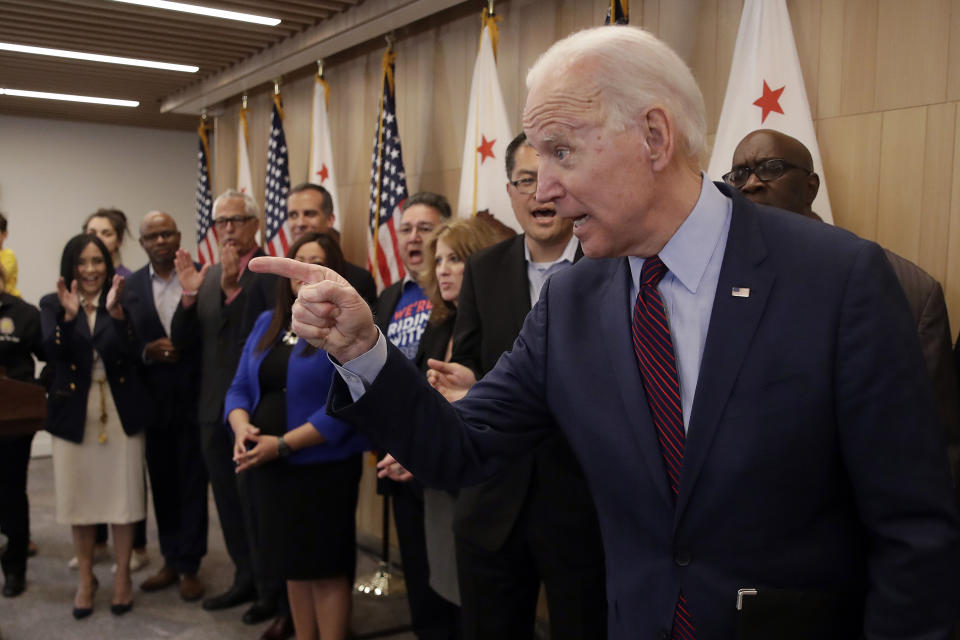Voters don’t want the Sanders-Warren revolution
Sen. Elizabeth Warren is a brilliant debater and policy expert who ran a disciplined, proficient campaign. Yet she dropped her presidential bid after winning none of the first 20 primary elections and placing a dismal third in her home state of Massachusetts. What happened?
The answer lies not just in Warren’s flameout, but in the shrinking campaign of Sen. Bernie Sanders, who was the frontrunner a week ago but is now behind the recently moribund Joe Biden. With a large sampling of votes representing all cross sections of the Democratic electorate now in the bag, it’s evident that voters simply don’t want the radical, disruptive regime Sanders and Warren have both promised.
Sanders first. He’d remake the U.S. economy most dramatically, with a vastly expanded welfare state. College would be free for everybody. The government would finance healthcare for all. Fossil fuels would be out. Green energy would be in. Fired workers from disfavored energy and industrial sectors would go on the government dole if they didn’t magically find new work in Sandersland. All these goodies and more would be paid for by sharply higher taxes on businesses and the wealthy that could cut into the availability of private capital and shrink the economy.
[Check out our Electionomics podcasts with Rick Newman and Alexis Christoforous, including all the latest election analysis.]
Like most revolutions, the Sanders insurgency relies on idealistic young people manning the barricades. But young people aren’t. The portion of primary voters aged 18-29 is actually lower so far in 2020 than it was at the same point in 2016. Sanders is winning those voters by 41 percentage points over Biden, and he’s also winning 30- to 44-year-olds by 19 percentage points. But Sanders isn’t persuading more younger people to vote. “Sanders hasn’t expanded the universe of younger voters,” analyst Amy Walter wrote for the Cook Political Report. Biden, meanwhile, has large leads among older voters who are turning out in high numbers.
A surge of younger voters is crucial for Sanders, because if he were the Democratic nominee, that’s the only chance he’d have at beating President Trump. Sanders isn’t even drawing enough new young voters to beat a stale Joe Biden. Young people may be discovering that revolution usually sounds better than it is.
Flight to safety
Voters are also sending the unmistakable message that they want a safe candidate with the best chance of beating Trump, rather than a bomb-thrower like Sanders. “Biden’s smashing win in South Carolina restored faith in his presumed electability, and the twin dropouts and endorsements by Pete Buttigieg and Amy Klobuchar allowed Biden to keep riding the wave,” Larry Sabato of the University of Virginia’s Center for Politics explained after Biden’s dramatic overperformance in the March 3 Super Tuesday elections. The best evidence for this flight to safety among voters is Biden’s surprise win in Massachusetts on March 3. Sanders was favored to win, and Elizabeth Warren to come in second, since it’s her home state. Biden barely even campaigned there, knowing his odds were long. Yet Bay Staters said no thanks to Sanders and Warren, we’ll take Biden.

Sanders, in fact, isn’t even winning the same portion of votes as he did in 2016, when he challenged Hillary Clinton all the way to the end of the primaries. His 2020 take was far lower in Iowa, New Hampshire, Virginia, North Carolina and other states than it was in 2016. That year, he beat Clinton in Michigan, which votes on March 10 this year and will be a key tell of Sanders’ true strength. It’s possible Sanders did well in 2016 mainly because he was the main alternative to Hillary Clinton, who turned off a lot of voters—even Democrats. Biden certainly has liabilities, but he’s likeable and doesn’t tend to send voters frantically looking for an alternative. Sanders may have peaked in 2016, in other words.
Warren was a deft, tireless campaigner who looked like the Democratic favorite as recently as last fall. Her unraveling is one of the bigger puzzles of the campaign so far. Still, Warren lined up with Sanders on the far-left side of the Democratic party, with only slightly more modest versions of his sweeping plans for government health care, free college, energy reform and other big issues. She may have seemed like a Sanders-lite candidate to voters who simply didn’t want to take the risk on a nominee Trump could easily brand as a socialist. Trump can call Biden many things, but the socialist label won’t stick.
Above all, Democratic voters seem to be saying they care far less about the ideology of their candidate than about his or her—well, his—ability to beat Trump in the general election. They care about health care, global warming, income inequality and social justice. But in backing Biden, they’re voting for a candidate they think will make modest changes from the White House over ones likely to keep calling for revolution from the sidelines.
Rick Newman is the author of four books, including “Rebounders: How Winners Pivot from Setback to Success.” Follow him on Twitter: @rickjnewman. Confidential tip line: rickjnewman@yahoo.com. Encrypted communication available. Click here to get Rick’s stories by email.
Read more:
Read the latest financial and business news from Yahoo Finance
Follow Yahoo Finance on Twitter, Facebook, Instagram, Flipboard, SmartNews, LinkedIn, YouTube, and reddit.

